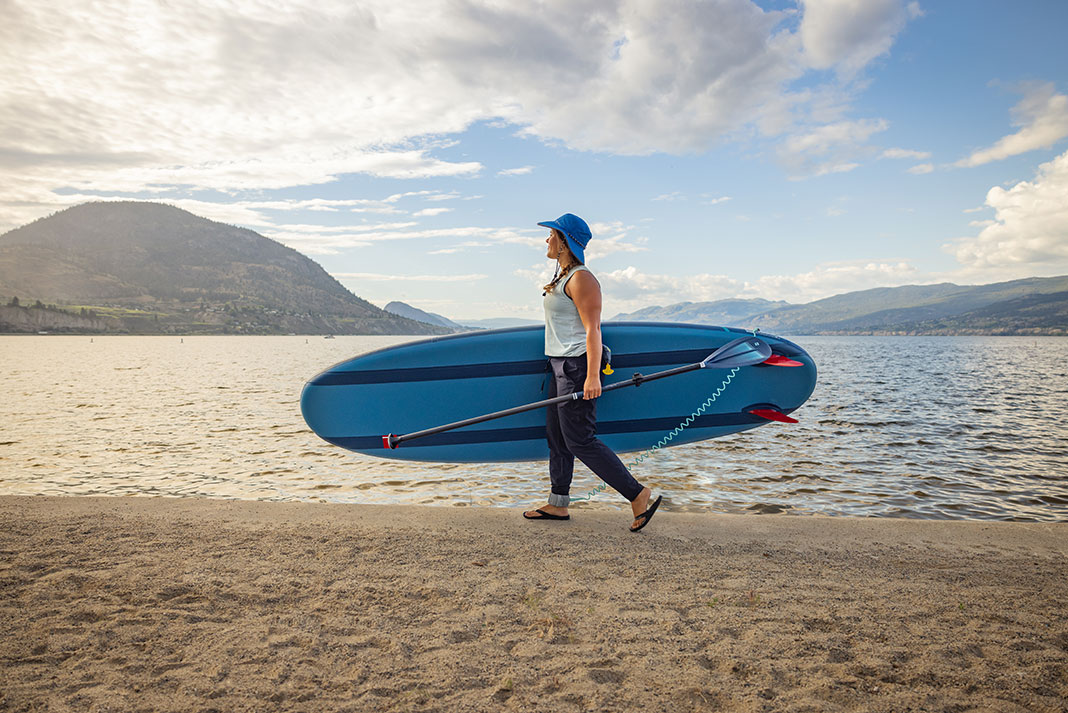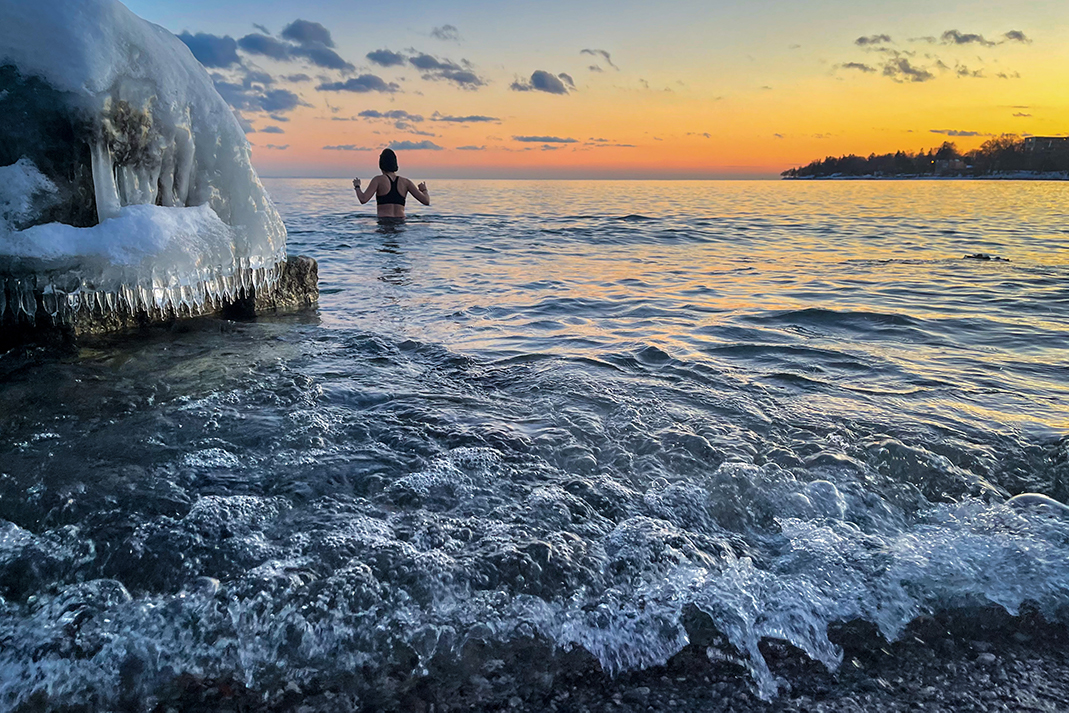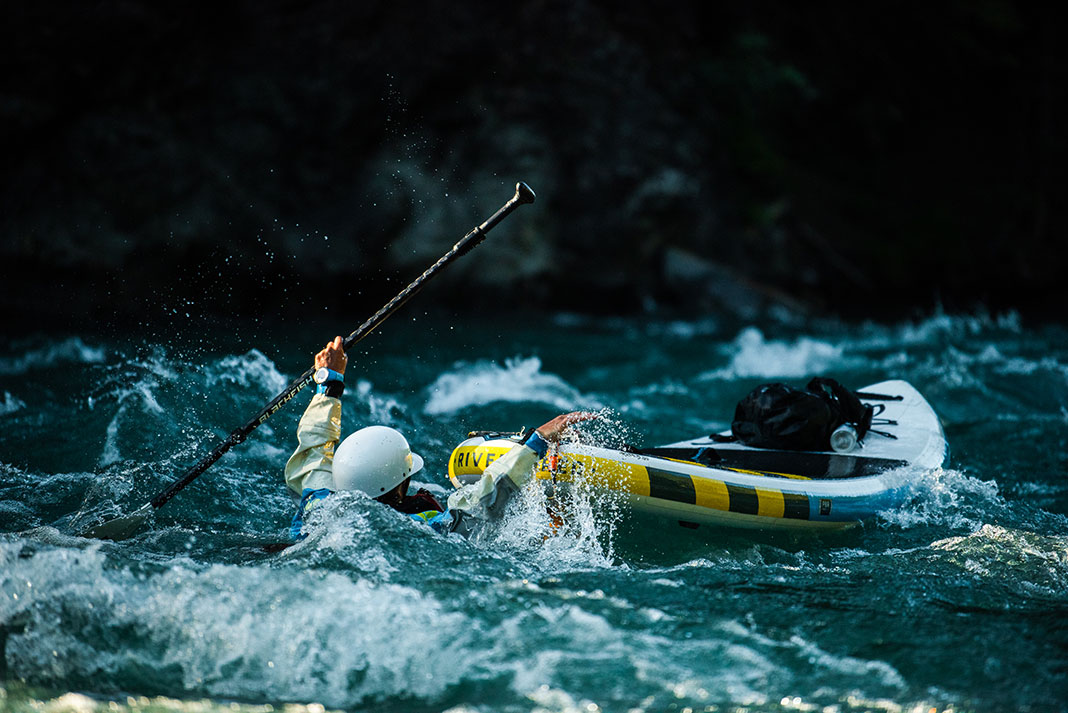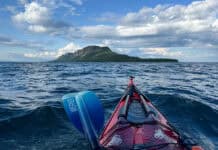Many standup paddleboarders have a vivid memory of their first time encountering the sport. Maybe they witnessed someone gliding across the water at the beach, or perhaps they saw a crazy SUP surfing video on the internet. No matter how we first came in contact with the sport, the reaction is often the same: I want to try that.
As someone who introduces people to the sport, a common question I’m asked is, “How hard is it to do?” Often, people will see someone else paddleboarding and think that it’s an extremely difficult balancing act, like walking on a slackline or riding a unicycle.
However, the answer to the question is quite simple: stand up, relax and have fun. Unlike slacklining or riding a unicycle, the worst consequence of losing your balance is falling in the water. You may fall in at first, but with proper technique and a bit of practice, you’ll be exploring your local body of water in no time.
Once you do learn how to paddleboard, the most beautiful aspect is whether you cover miles, carve waves, or just sit and enjoy an after-work sunset, it soon becomes not just an activity but a way of living.
How to standup paddleboard
What you need to get started
- Beginner-friendly standup paddleboard
- SUP Paddle
- PFD (low-profile life jackets and inflatable belt packs are popular options)
- Fin (integral to the board going in a straight line)
- Leash (recommended on open waterways like lakes, bays and oceans; very conditional and even controversial on rivers)
- Proper attire (dress for weather and water conditions)
- Cellphone or VHF radio (phone should be stored in a drybag or case)
- Whistle or sound-producing device
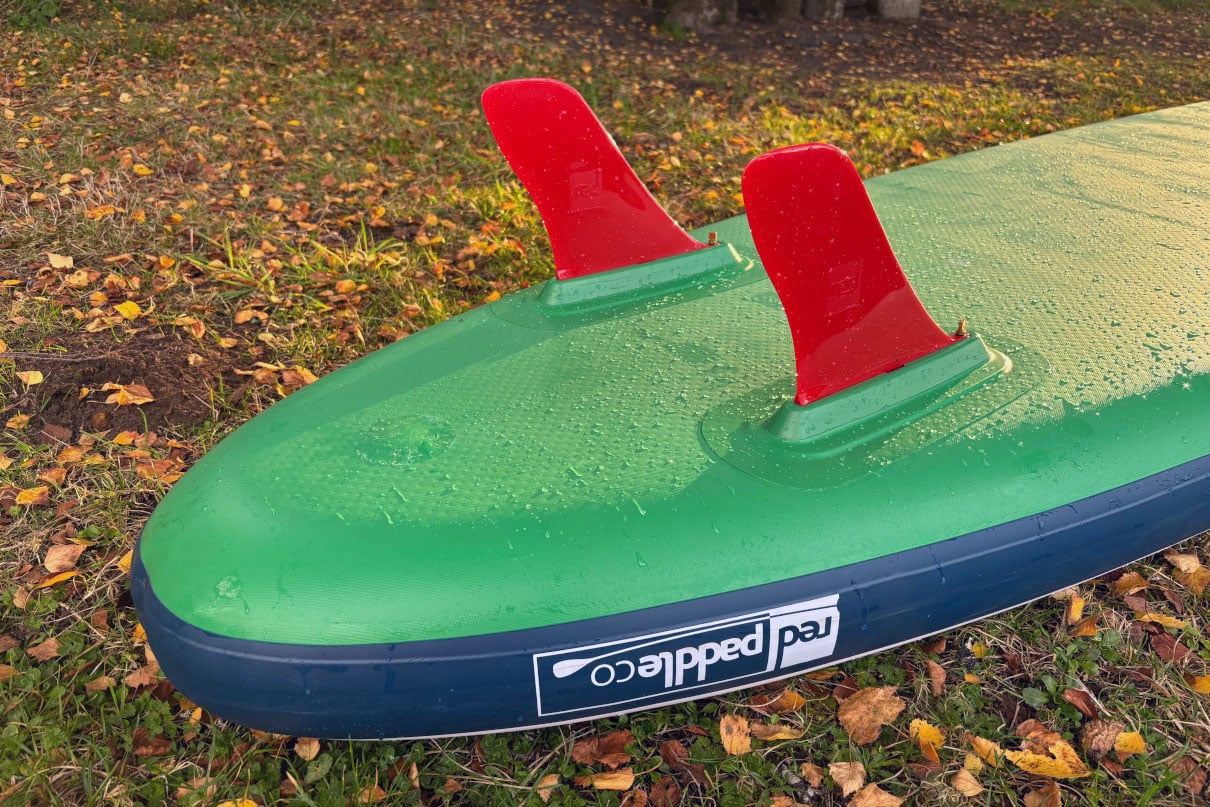
Getting on the board
For people who have never been on a SUP before, this can be the hardest and most intimidating part once you’ve figured out how to transport your paddleboard to the water for the first time. To do so, you are going to want to find a good SUP rack for your vehicle.
A quick note: The handle in the center of the board is an important reference point we’ll use, as it’s the center of balance for carrying and standing.
We’ll start with the easiest launch point, which is a beach with a sandy bottom. Walk the board out into the water deep enough to the point where the fin isn’t touching the bottom when you push down on the back of the board. Hold your paddle across the board in front of the center handle. Next, climb onto the board on your knees. From here, you can start by paddling while on your knees to get a feel for how the paddleboard moves under you, or just take the next step (literally) and push yourself up into a standing position.
From a dock, you have to be slightly more careful because falling could lead to hitting the dock structure. Depending on the dock’s height, you can sit on the edge with your feet on the board, set your paddle onto it and then either kneel or stand up, using the dock for stability as you push off.
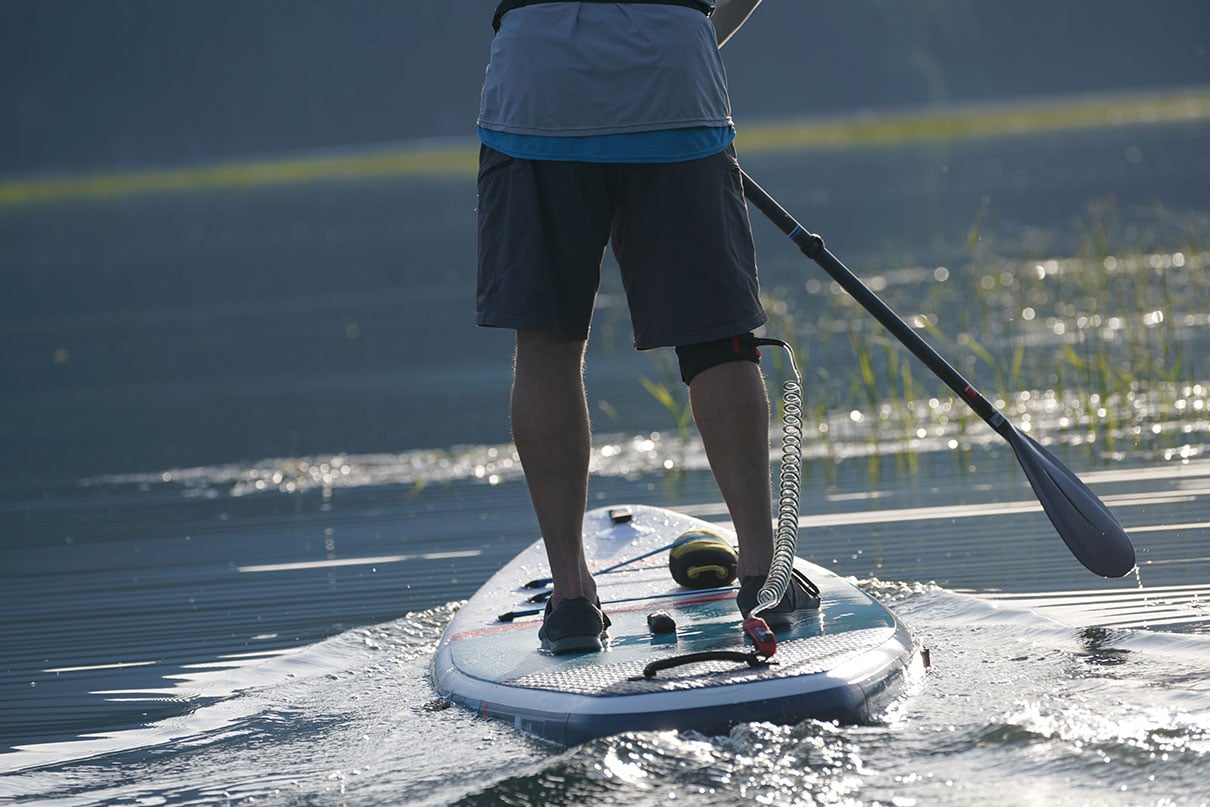
Some people find getting back onto the board after falling off in deeper water challenging. You won’t have the benefit of pushing off the lake or river bottom, so you’ll need to pull yourself onto the board stomach first and then, from a prone position, work yourself up to your knees and then your feet.
If you need rest, you can sit on a paddleboard. Climb onto the board, sit yourself down and give yourself a minute to catch your breath.
Finding where to stand
Knowing where to stand on a paddleboard is key to balance and comfort. As mentioned before, the handle is the center point and generally the widest part of the board, making it the most stable.
Since the handle is at the center, it also keeps your board laying as flat as it is designed to on the water’s surface. By being centered and having your board flat on the water, you produce the best glide to travel. So start with your feet shoulder-width apart in line with the handle. Later, you may need to adjust your foot positioning, especially for maneuvers and conditions.
Try to relax your legs. The more you can use your knees to absorb the movement of the water through the board, the more stable you’ll be. On calm water, shift your weight left and right to unbalance the board and learn how stable the board is.
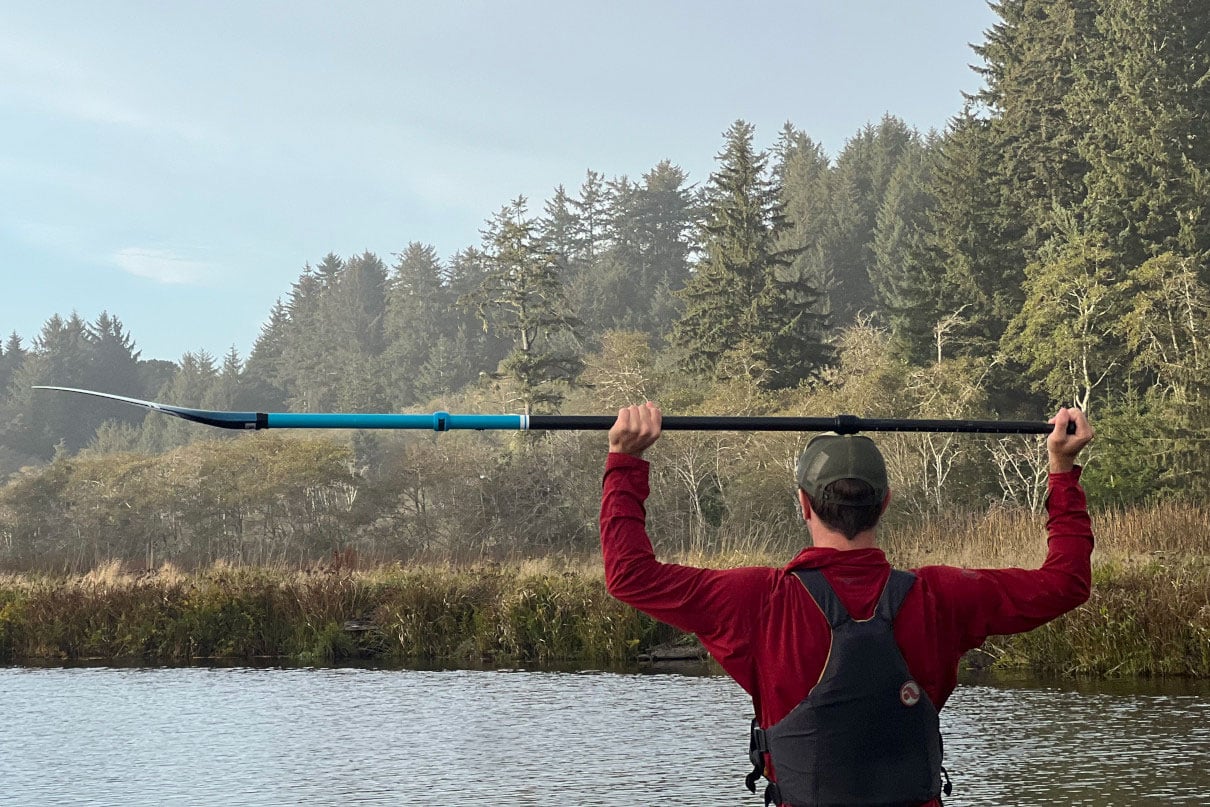
How to hold your paddle
Unlike a kayak paddle, where your hands are spaced on the shaft, a paddleboard paddle should be held with one hand on top of the T-shaped handle at the end of the paddle, and the other part way down the shaft. When holding the paddle, you should be able to place it across your head and have both arms bent at a 90-degree angle.
Figuring out the exact length for your SUP paddle is a science unto itself. Some paddles are a fixed length, but many are adjustable, which is great for figuring out what length works best and for versatility. A good place to start is that the paddle should be a few inches longer than you are tall. From here you can make adjustments for board size and paddling activity.
You’ll also notice it’s common for SUP paddles to have an offset, where the end of the blade is pointed outward. Have it pointed out toward the front of your paddleboard, which is how it’s designed to provide you with more effective strokes.
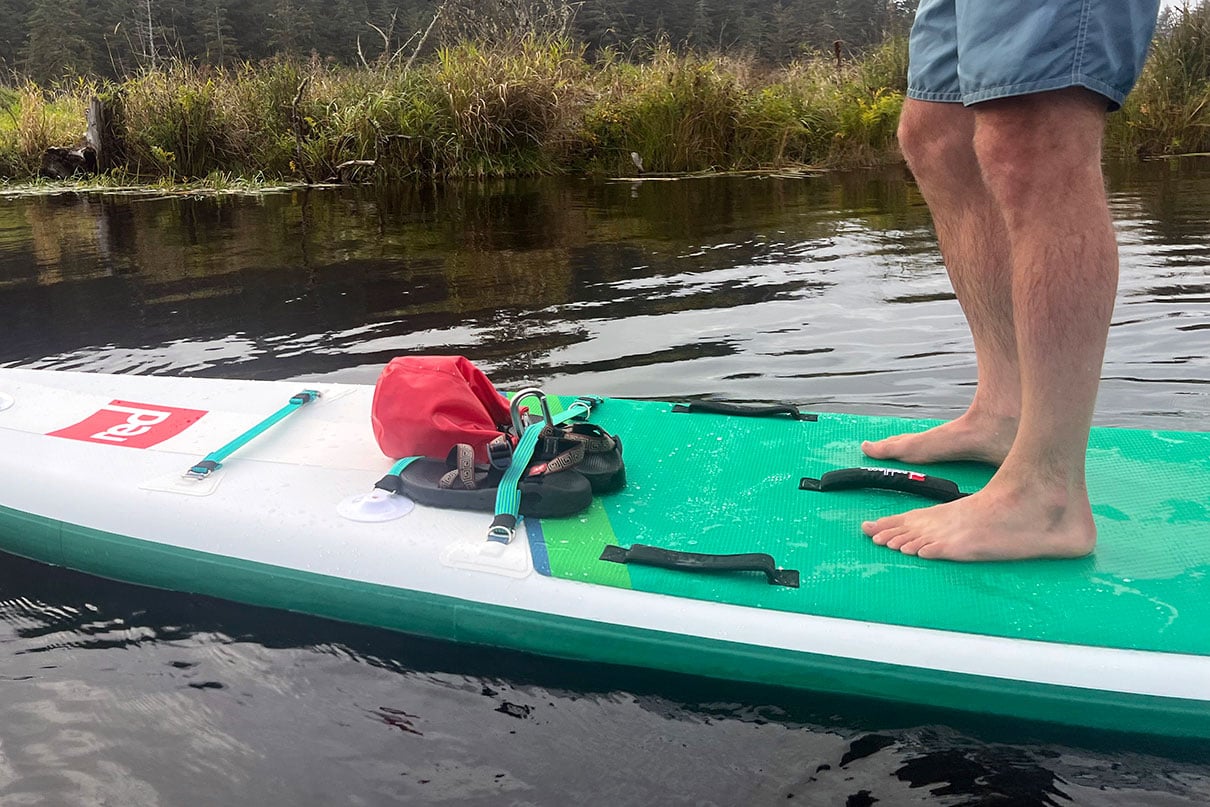
How to paddle a standup paddleboard
Learning proper SUP paddling technique takes some time, but the basic maneuver is to pivot at the hips, reach forward to plant the whole blade in the water, and then move the blade toward your feet as you stand up straight. Rather than thinking about moving the water with your paddle, think of it as planting your blade in the water and then pulling your board forward.
To stay in a straight line, keep your paddle as vertical as possible as you go through the stroke, and slice the blade out of the water when it’s reached your feet. The fin of your board is largely there to keep you traveling straight. You may need to occasionally switch between paddling on the left and right side of the board until you learn correctional strokes.
The basics of turning
Wondering how to turn on a standup paddleboard? The best option for beginners to turn their paddle board is the reverse, or backstroke. This turns the board relatively quickly because the backstroke throws the brakes on your momentum, especially the side the paddle is on, and the drag helps the board spin in that direction.
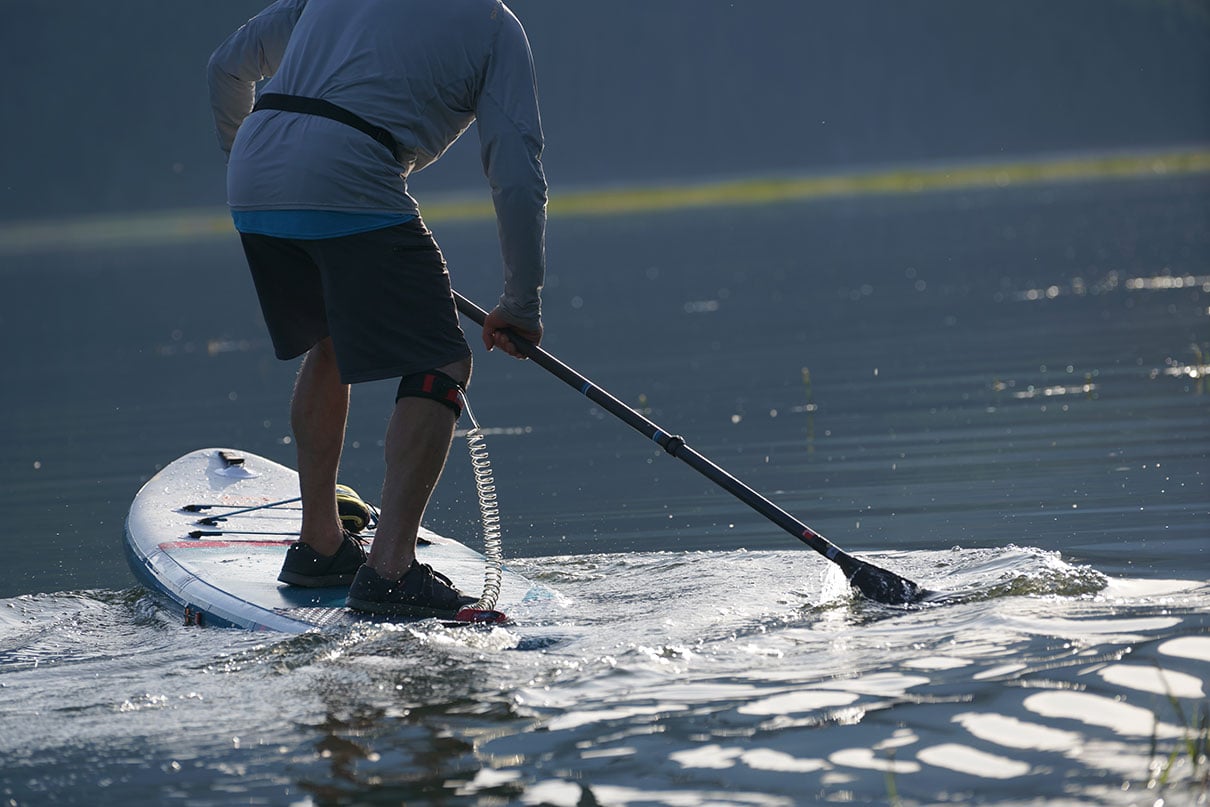
You’ll see experienced paddlers use impressive pivot turns, where they step toward the back of the board, pop the nose out of the water, and plant or sweep the paddle. As the name of the technique suggests, you can make very tight turns this way.
The pivot is a difficult maneuver for a beginner to pull off. The cross bow is more doable but can be tricky too. This is when you take your paddle from one side and reach across to the other side of the board without switching hands. Then you pull the blade and nose together like a pair of closing scissors. It’s a great turning technique that maintains some of your momentum.
Additional tips for paddleboarding
The best place to start
As you begin to standup paddleboard, you’ll start to become aware of every lake, river and pond around you because you’ll want to explore them.
Standup paddleboarders just starting out should stick to water they’re familiar with that doesn’t have a strong current, undertow or big waves. The flatter the water, the better as you learn the balance and technique of being on a SUP. Of course, even a lake or bay can change day-to-day so check weather forecasts and marine conditions to see if the day meets your ability level.
As you get more comfortable on the board, expand your horizons and enjoy the adventure that comes with gliding across bodies of water.
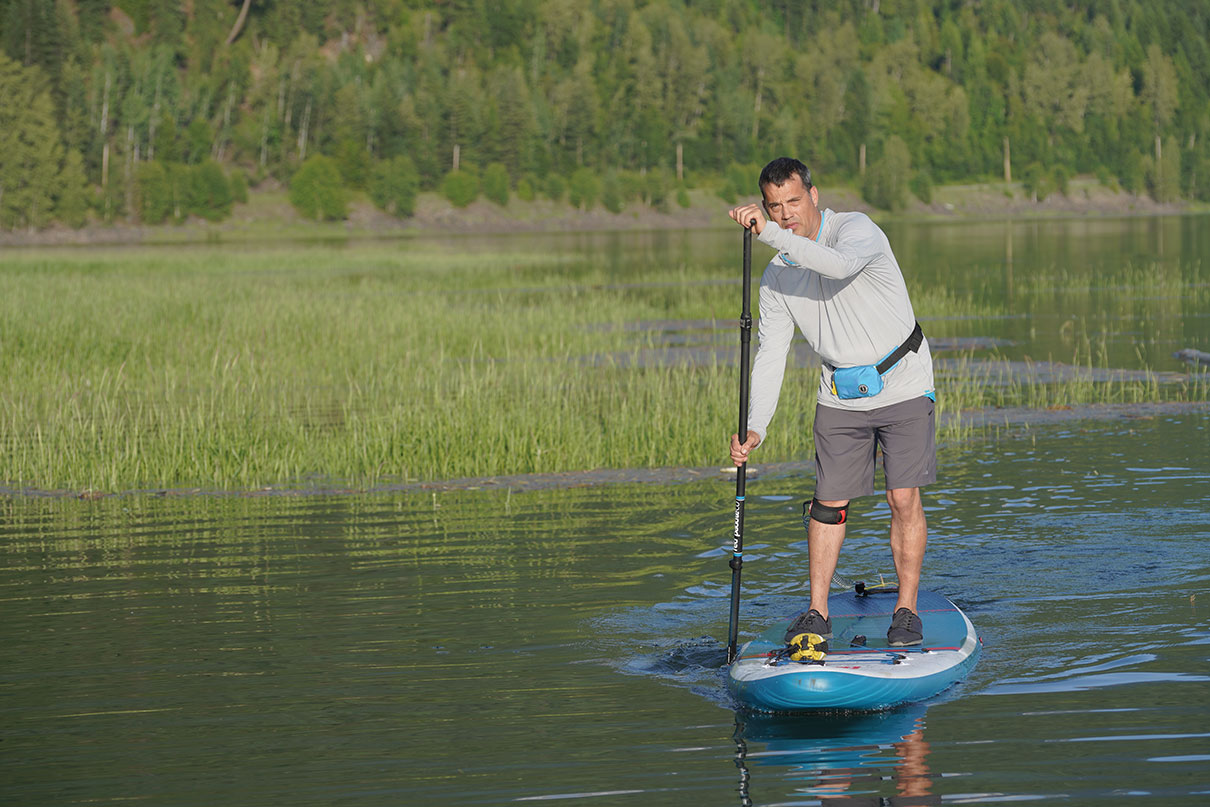
How to get back on your paddleboard
It’s bound to happen, and safe to say we’ve all fallen off our board. Once it does, and you aren’t in a place where you can simply stand up, you may realize climbing back on is trickier than you thought. There are a few methods you can use to get back on the paddleboard.
The best way is to use the handle we keep mentioning at the center of the board to pull your chest across. Stay low until you can center and stabilize yourself and stand up from there. It’s helpful to lay your paddle parallel with the board on the far side while you climb on so it doesn’t float away.
Some people also find success going to the tail and crawling up from the back of the board. Again, stay low until you find yourself in a centered and stable position to stand up.
If you’re struggling or tired, remember your paddleboard is a giant inflatable or foam-filled flotation aid you can rest on until you are ready to climb back on or swim with it to shore. You can also have a paddling buddy put their hands on the board on the opposite side of you to hold it steady.
How to improve your balance
At first glance, standup paddleboarding appears to be entirely an arm workout, but newcomers to the sport often find it’s their legs and core that are more sore than anything.
The better your balance gets, the more the workout will shift to being about the arms or whole body. To improve your balance for paddleboarding, things like balance boards or bosu balls are extremely beneficial. Weight training to strengthen your legs will help you stabilize on the board. Wide, inflatable paddleboards also provide a good, stable platform for beginners.
Beyond that, strengthening your core, back, shoulders and arms will help make you a better, more well-rounded standup paddler.
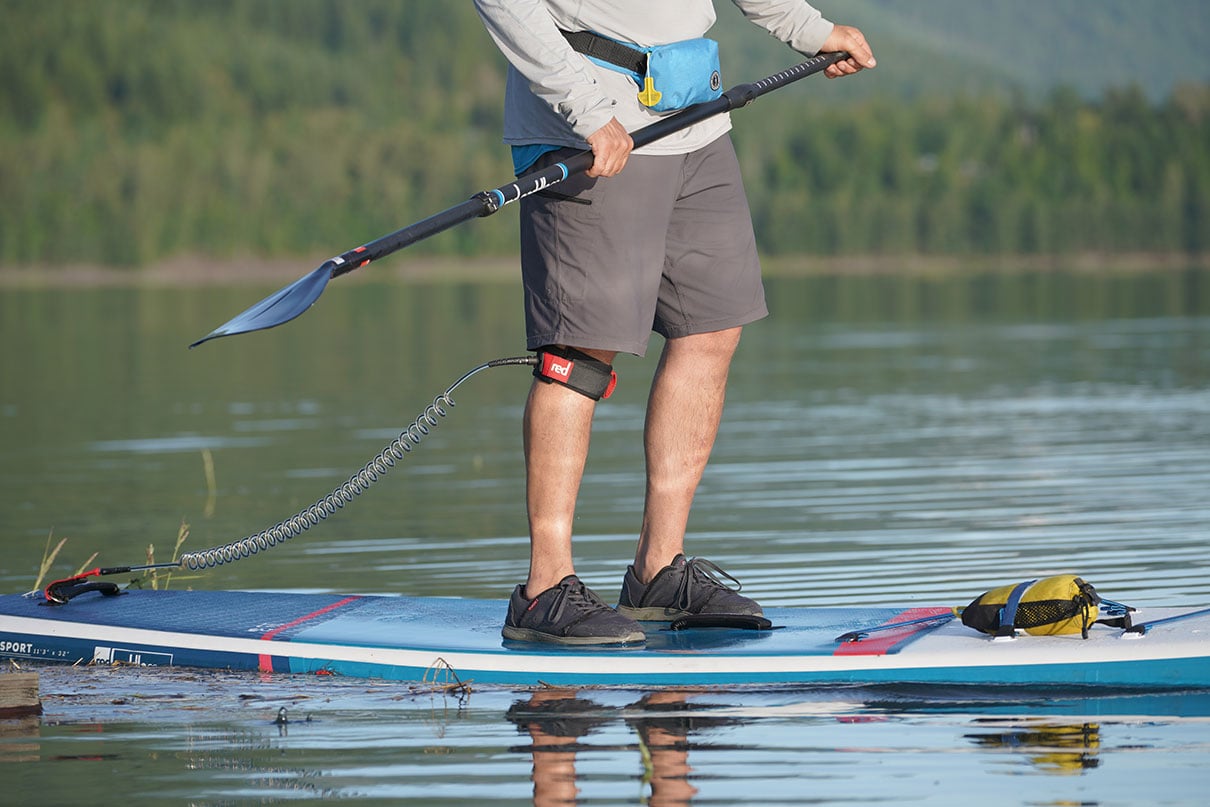
More on dressing for success
The lifestyle of SUPing conjures images of board shorts and bikinis, but when you are dressing for a paddlesport, you need to factor in weather, sun exposure and water temperatures in the event of falling in. In paddleboarding, there’s a high likelihood that you’ll get wet.
If you’re thinking about paddling in colder seasons, even the most experienced paddlers will wear full drysuits with sealed boots in the winter so they won’t experience the dangerous shock of cold water. Wetsuits are another good option, especially if you are coming to the sport from surfing and already have one appropriate for your water temperatures.
When it comes to personal safety, the unsinkable nature of paddleboards can be both a blessing and a curse. Many people think that because they’re paddling on a vessel that won’t sink, they don’t need to wear a personal flotation device (PFD). The problem is that accidents do still happen, and you should always be wearing a PFD—regardless of what the local marine regulations or the sometimes lenient rules at rental places might say.
A low-profile life jacket provides adequate flotation without restricting movement or bumping into your strokes. Inflatable belt-pack PFDs have become another popular option for standup paddling because they sit around your waist and are the size of a small hip pack. These inflatables come in both automatic and manual deploying designs.
The deal with leashes
The other hugely important piece of safety equipment you should almost never go without on open waterways like oceans, bays and lakes is a leash. These attach to the rear of the board and then wrap around your ankle or calf.
If you fall off your paddleboard, the leash is your lifeline. This is what keeps you attached to the board, and allows you to pull the SUP back toward you if you fall in the water. They’re crucial pieces of safety gear worn by even the most experienced standup paddleboarders.
Rivers and leashes are a different story. The use of leashes on rivers and other moving waterways is strongly debated and requires specialized gear and an understanding of considerations. The issue is, if you use a traditional leash on a flowing river and it gets snagged on an object, any current will be too strong for you to reach and release it.
Because of this danger, leashes used on a river should feature a minimum of a quick-release mechanism that is within close reach. Those who do use a leash on a river often wear these quick releases around their waist or on their life jacket. Paddleboarders considering a river leash system should consult with experienced river SUPers and have a strong understanding of implementing these safety mechanisms.
Feature photo: Scott MacGregor


